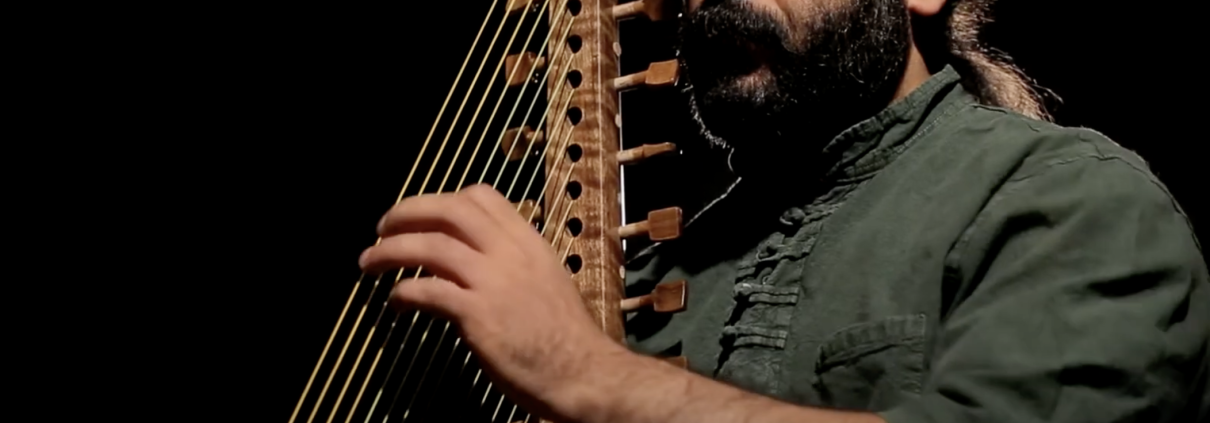The Harp of Chogha Mish (4th Millennium B.C)
Excavations in the Elam plain were conducted for the first time by Professors Pinhas Delougaz and Helene J. Kantor from the Oriental Institute of the University of Chicago between 1962-63. Several ancient seals, dating back to the 4th millennium B.C., were discovered in the excavations, one of which, from Chogha Mish Hill located in Khuzestan, is a 6000-year-old evidence, depicting the most ancient orchestra of the world on its surface.
In his report on the findings in Chogha Mish and the seal, Delougaz writes:
This is the first document according to which human beings use music as an organized art. The impression depicts a group of instrumentalists that are actually the pioneers of modern orchestra. Behind a large harp in the picture, the profile of a kneeling musician could be observed while another one is shown playing a drum. The third player holds two horn-like objects that we, at first, thought to be castanets, but in another fragment we could clearly see that one of the ending parts of the horns touches the player’s mouth. Thus it is undoubtedly a wind instrument such as a horn. The fourth person places his hand on his cheek, quite similar to the singing gesture which is still practiced in the Middle East. Therefore, we have here an orchestra with musicians playing string, wind, and percussion instruments accompanying a singer. The seal depicts a feast with music, related to religious rituals.
Features of the reconstructed model
The component of the instrument:
- 1. Black walnut wood for the sound box, turning pins and the column
- 2. Bone, ebony wood and brass for decorations
- 3. Goat skin for the soundboard
- 4. Woven silk for the strings
- 5. Furbishing varnish
Some other models of this harp have been also discovered in other civilizations:
- 1. 2700 B.C –Mesopotamia, harp of Princess Shobad’s tomb
- 2. 1900 B.C – Egypt, harp of Pharaoh’s tomb
These models date back to later periods, and are posterior to this Persian harp, thus indicating the Persian origin of this harp.
Maker and player of the instrument: Seyfollah Shokri
- Director: Hamed Ahmadi
- Camera: Vahid Golriz
- Edit: Farhad Najafi-Zadeh
- Light: Omid Kyani
- Produced in: Studio Hamed
- Produced by the order of: Parviz Shahcheraghi
***



